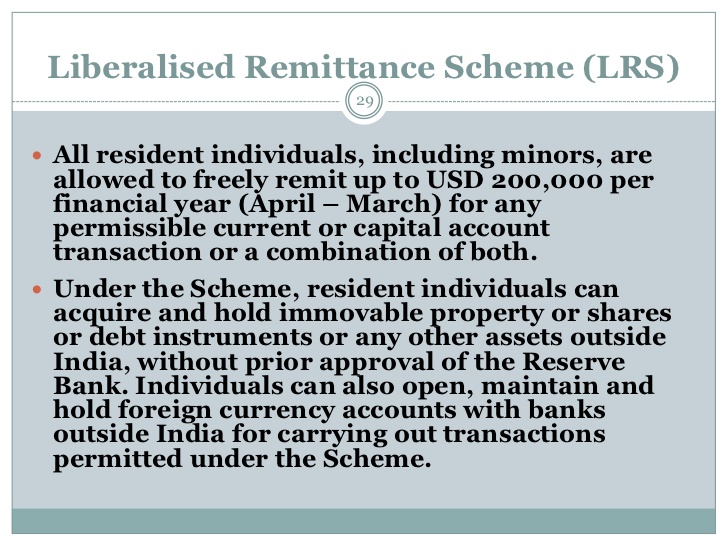-
LRS is facility provided by RBI for all resident individuals including minors to freely remit up to certain amount in terms of US Dollar for current and capital account purposes or combination of both.
-
The scheme was introduced in February 2004 and its regulations are provided under Foreign Exchange Management Act (FEMA), 1999.
-
After it was launched, the LRS limit was US $25,000, but it has been revised in stages consistent with prevailing macro and micro economic conditions.
-
At present, LRS limit for all resident individuals, including minors, is US $2,50,000 (Rs. 1.5 crore) per financial year.
-
Under LRS, individuals can make remittances for overseas education, travel, medical treatment, maintenance to relatives living abroad, gifting and donations.
-
The remitted money can be used for purchase of shares and property as well.
-
Individuals can also open, maintain and hold foreign currency accounts with overseas banks for carrying out transactions under it.

Restrictions:
-
Under LRS, remittances cannot be used for trading on foreign exchange markets, purchase of Foreign Currency Convertible Bonds issued abroad by Indian companies and margin or margin calls to overseas exchanges and counterparties.
-
Similarly, individuals are not allowed to send money to countries identified as ‘non cooperative jurisdictions’ by Financial Action Task Force (FAFT).
-
It also prohibits remittances to entities identified as posing terrorist risks.
-
The definition of relatives under LRS has been now aligned with definition of relative with definition given in Companies Act, 2013 instead of Companies Act, 1956.